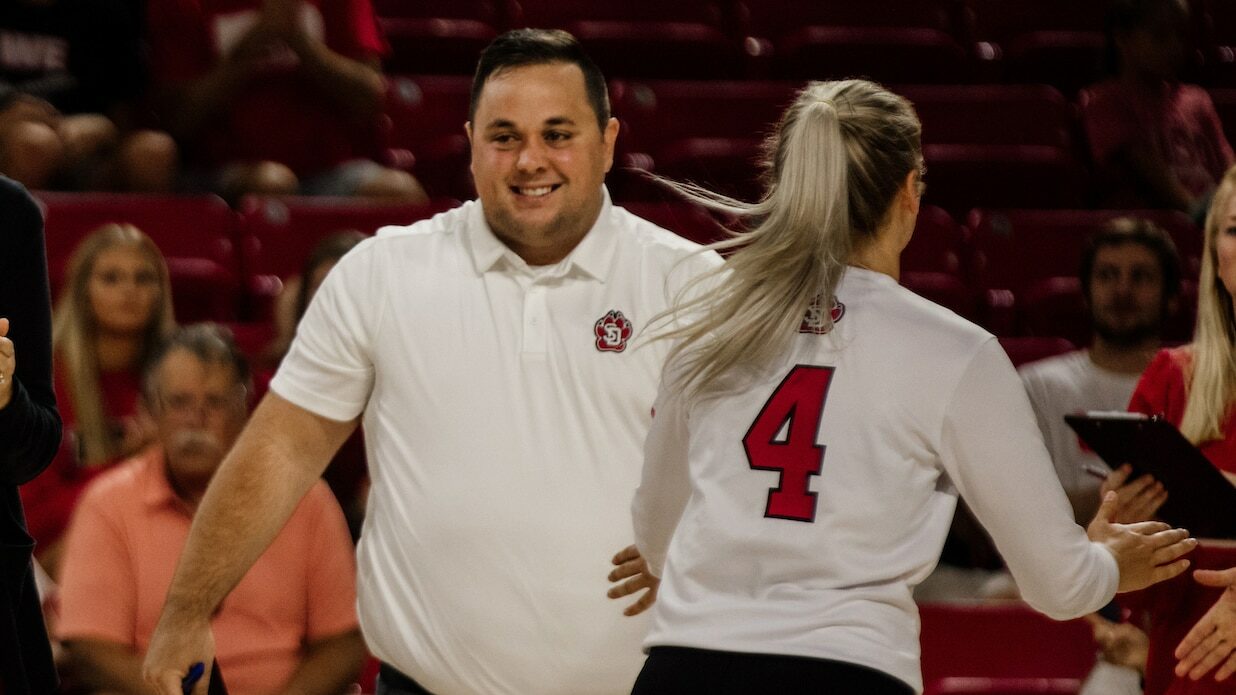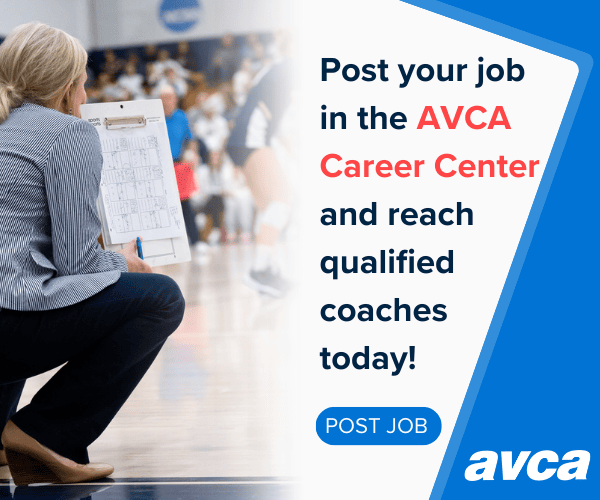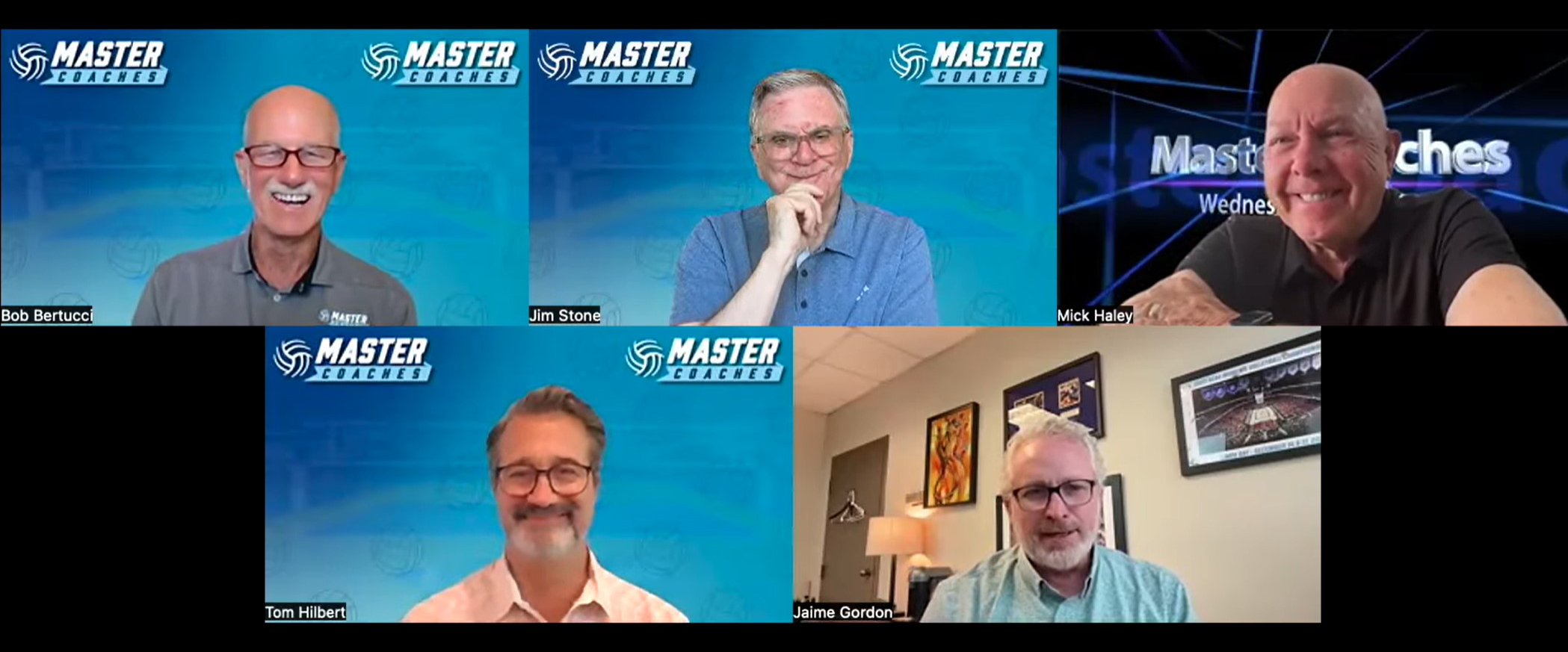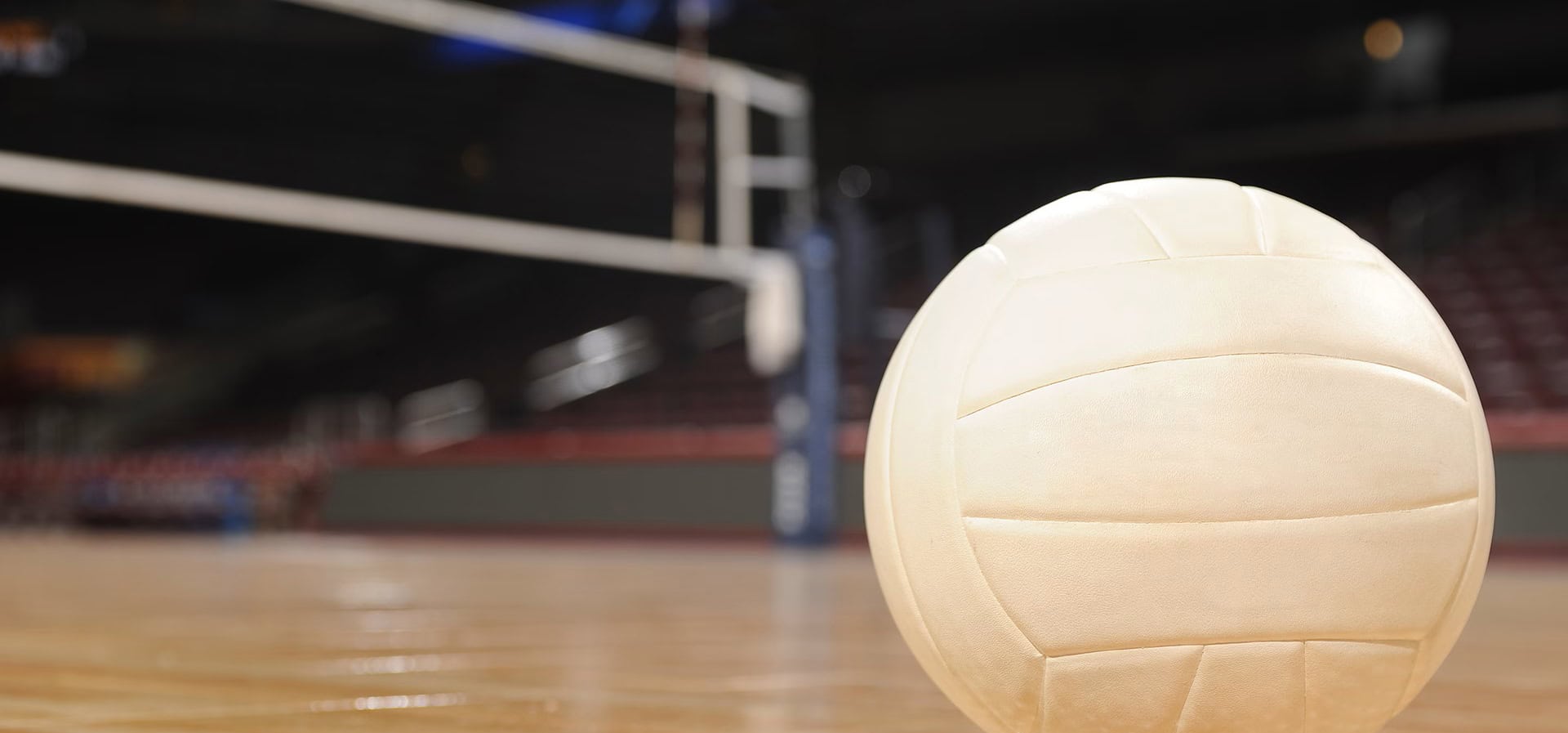By Michael Runde, Associate Head Coach at South Dakota
I’m sure I won’t be the first nor last person to tell you how social media can benefit your team or athletic department. Disclaimer… by no means do I claim to be a social media expert.
Over the years we’ve made using social media a priority in our program to help get our message out. Since the pandemic started, social media was something we could put more time and effort into with our normal work routines on pause. Through all of this, I’ve learned some things that have helped drive up our followers and interactions.
- Understand what content you will get from your marketing and sports information departments. Our social media team in the department has a calendar to schedule posts to ensure content is spread out throughout the week. As a staff, we know what content will be created by what department and when, so we can plan accordingly.
- Develop a monthly plan. Each month we sit down to create a schedule that includes making one post per day. Schedule in birthdays, game days, road trips, and other events and go from there. It is inevitable that you will divert from the plan, but having extra content is never a bad thing.
- It doesn’t take a professional graphic designer or videographer to make great content. At South Dakota, we have some great, creative minds that can produce interesting videos, graphics, and pictures for our accounts. The reality of the situation for many of you reading this could be that those resources are limited. We all love a great one-minute, professionally shot highlight reel of a practice or match. But people also enjoy a top play from a match, a quick slow-motion video of our middle hitting a ball, or a celebration clip during a practice. We’ll come back and share more on videos later.
- Use analytics and insights. Each different platform has an area to see how different posts perform. I spend some time each week looking at these analytics to see how different posts do. Using this information has helped us plan and create more content based on what has been successful with our followers.
- People like “real.” For a long time, I felt like everything had to be a graphic or professionally done video (see tip #3). Using tip #4, I’ve learned that what I think our followers will enjoy vs. what performs well is different. See the example below, which shows two separate Instagram posts. The first is a picture of our freshmen class right after they completed their first season as Yotes. The second is a graphic about one of our players earning All-American honors. Which do you think got more likes? The results were shocking for me, too.
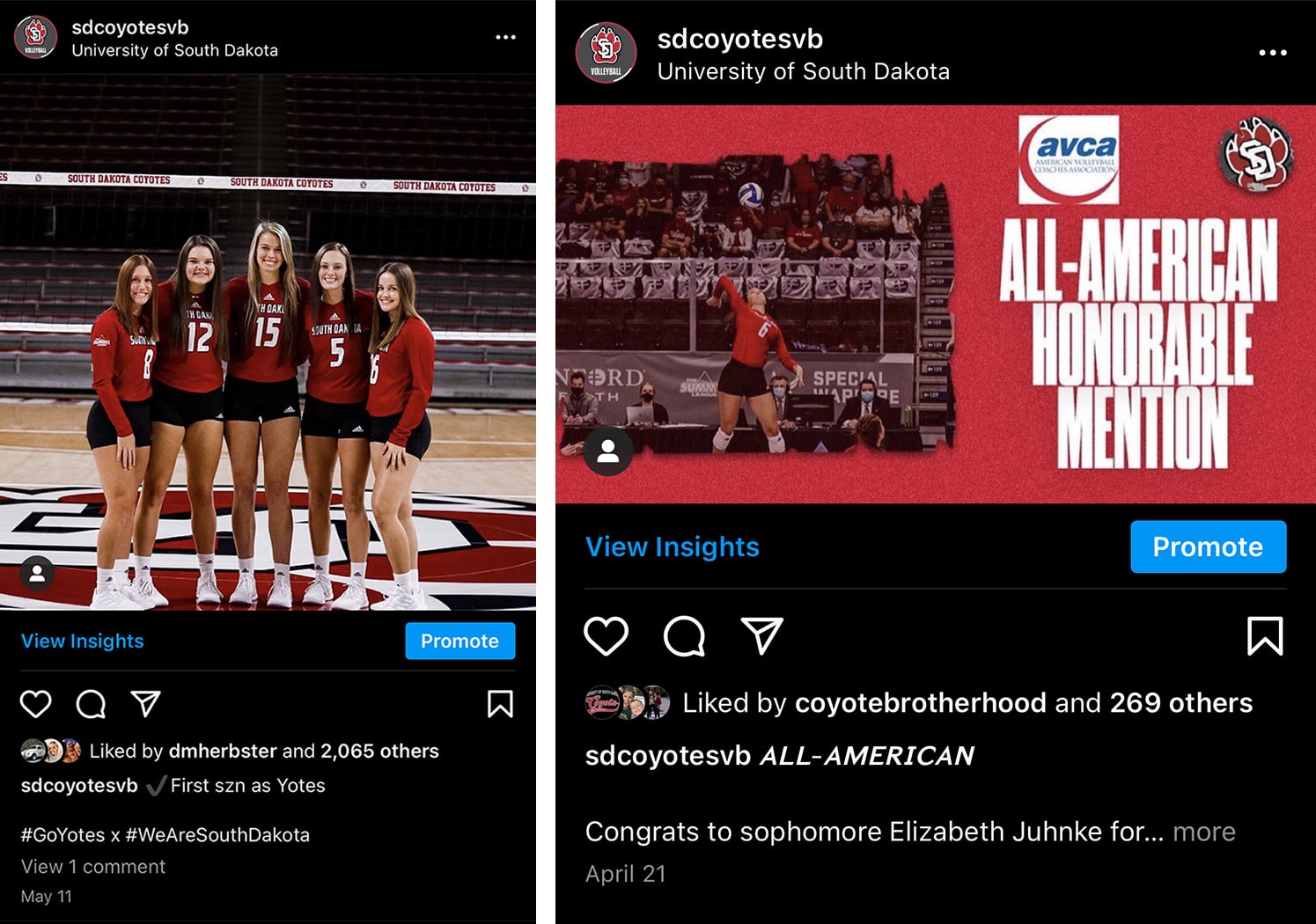
- Stories and Instagram takeovers. These are a great way to interact with your current followers, but I’ve learned—from actual social media experts—takeovers don’t do much for you in terms of drumming up new followers or interest on your page. Users can easily click on a story from their home page, if they follow you, but it doesn’t take them to your page. Once again, it’s a great way to connect with your current following, but it does not necessarily take your page to the next level.
- Videos! This one combines info from tips #3, #4, and #5. Would it be great to have a professionally done video each day or week? Yes, but resources are limited. Tips #4 and #5 are similar, in that using the analytics will help you create video content that your followers actually watch. We started a video series with one of our players interviewing her teammates and coaches; each was about two minutes long. Using the analytics, we saw the average view length was about 23 seconds.
When discussing this with our video coordinator in our athletic department, she informed me that rarely does our department produce a video over one minute because of that same reason. Users are constantly scrolling through their phones waiting for something else to catch their attention. Back to tip #5, the videos that perform the best on our Instagram are TikTok’s, slow-motion clips from practice, and a single highlight from a match.
- Delegate. Capturing videos or pictures during practice can take a coach away from training, so you can use managers, practice players, GA’s, or injured athletes to help in the process. The chances are they know more about what does or doesn’t work on social media, and you can have any of them spend one hour at practice taking different pictures or videos you can use over the course of a season when you need something to post.
- Reuse and recycle. Many of the things that work for one account will work for another. I’ve modeled some of what we do based off what I’ve seen from different accounts both in our department and across NCAA volleyball. Also, recycle what has already been used in your own program. Fans and followers of our team love learning about our new players. Signing day, high school graduation, new jersey numbers, and move-in day are a few staples we use each year to highlight our newest Yotes.
- Tag your players. We saw a big initial spike in interactions and followers when we started tagging our players in posts on each of the different platforms. Plus, it benefits the athlete with their own interactions and followers.
Like I mentioned, our goal with our social media accounts is to help get our team’s message out. Each of those tips has helped us increase our following on any given platform so when the “big” things happen, our fans and supporters are in the know. I hope you can take one or two things to help share the message of your own program!


